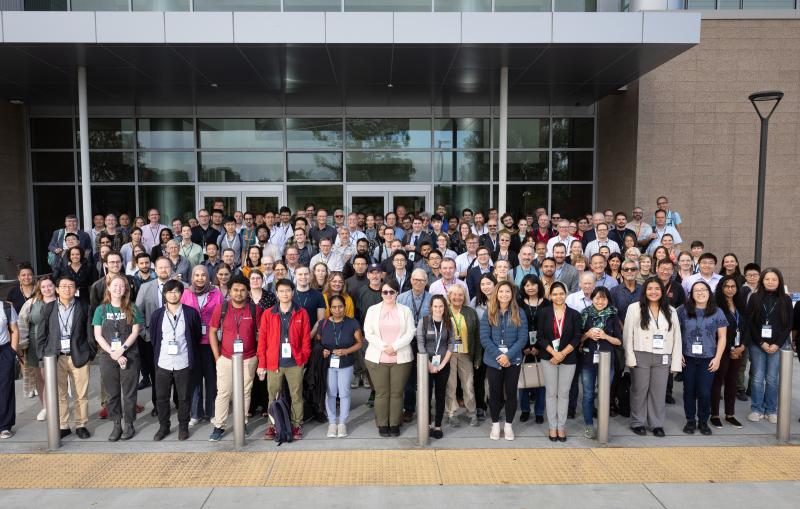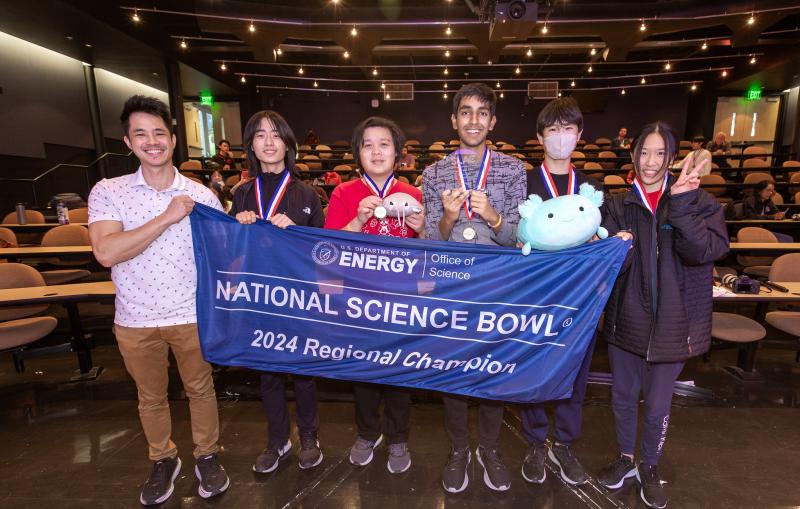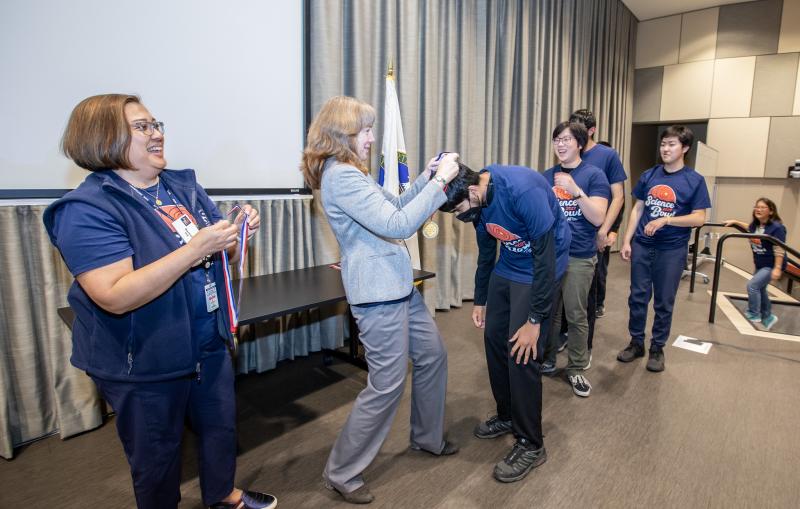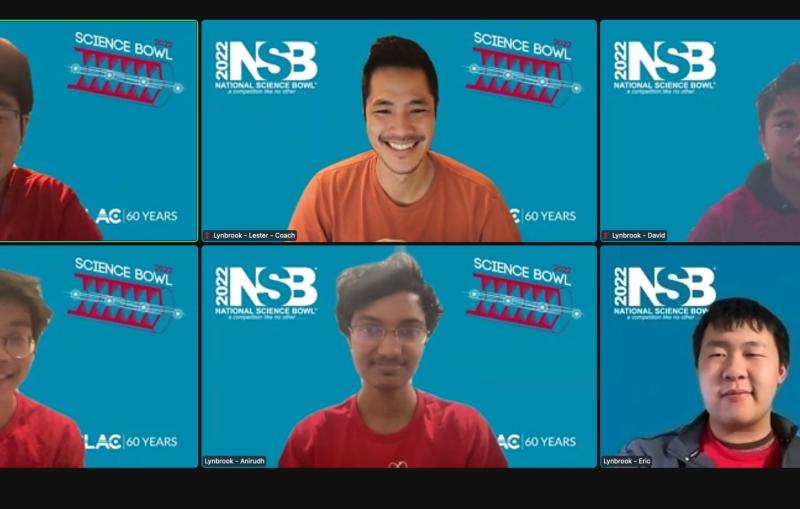Victory for The Harker School of San Jose in 2020 SLAC Regional Science Bowl competition
Twenty-eight teams went head-to-head, testing their science knowledge and buzzer skills, for the chance to go to the nationals in April.
By Caitlyn Buongiorno
Over 100 students from Bay Area high schools came to the Department of Energy’s SLAC National Accelerator Laboratory on Feb. 8 to compete in the Regional DOE Science Bowl. The 28 teams were paired off and sent into 12 rooms to battle it out in the first of 12 rounds. Each round consists of a series of fast-paced questions based on biology, chemistry, physics, earth and space sciences, energy and mathematics. The winner of each round then goes on to face another winning team, while the losing teams fight to regain a seat in the competition.
Harker breezed through the morning rounds, going into the afternoon undefeated. The afternoon started a bit shakier for the team, as they fell behind Saratoga High School by over 50 points in the first half of their second game.
“It was nerve-racking,” recalls Harker co-coach Robbie Korin. “It wasn’t obvious if we were going to pull it back or not.” But the team came back strong in the second half and managed to maintain their streak.
In the last round, Harker faced off against Saratoga once again, marking the end of a five-year final-round showdown between Harker and Lynbrook High School of San Jose, which was knocked out early on in the competition. This time the game went a lot smoother for Harker, and they ended the day undefeated and as regional champions.
Harker will move on to the 2020 National Science Bowl (NSB) competition hosted in Washington, D.C., in April.
Fostering scientific curiosity
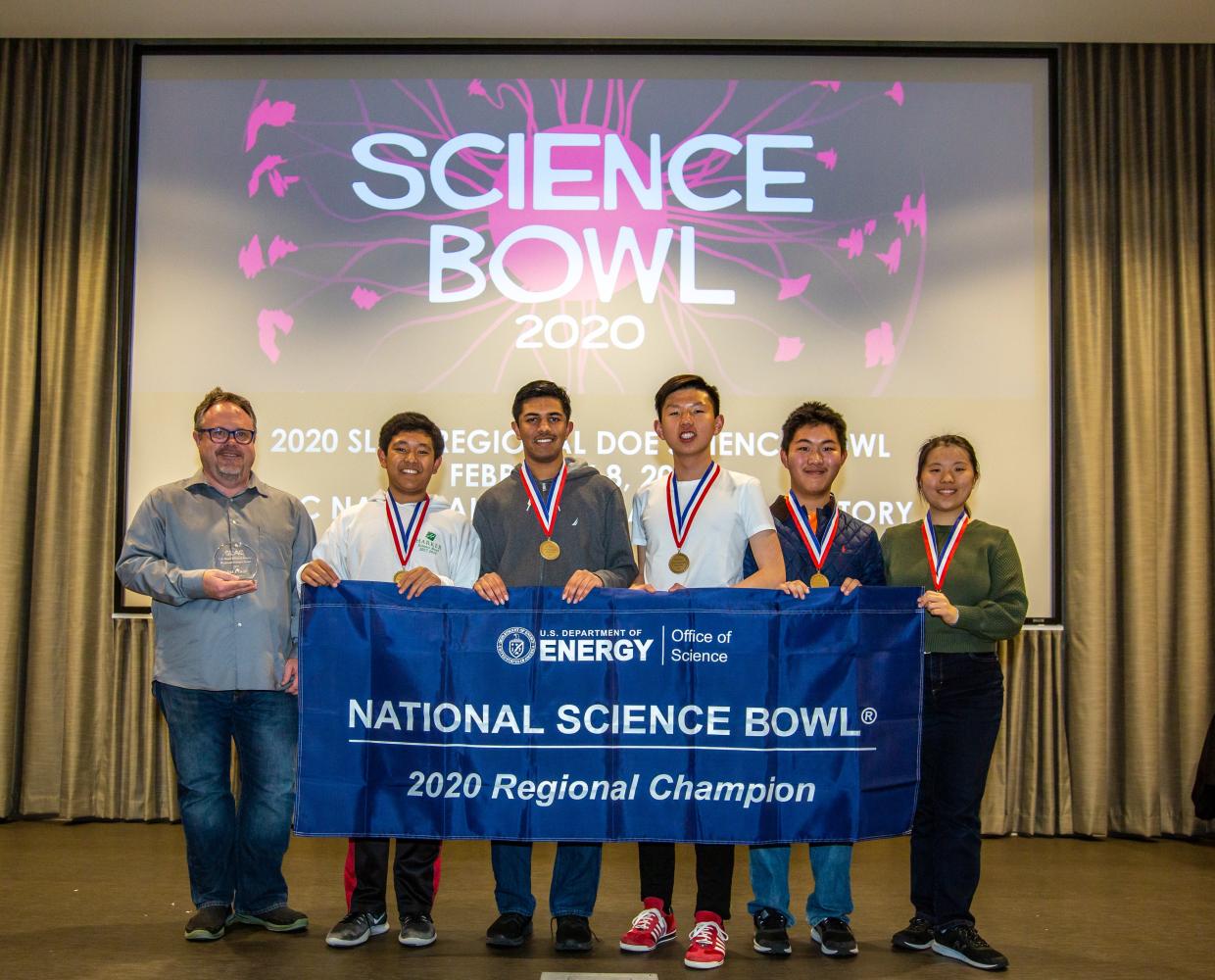
This was SLAC’s 15th year hosting the annual competition. Created in 1991 by the DOE, the goal of the National Science Bowl, both then and now, is to foster student involvement in math and science activities important to DOE and the nation. Every year, more than 9,000 high school students and 5,000 middle school students will compete in 65 high school and 50 middle school regional Science Bowl tournaments. The first SLAC regional was in 2005.
“Science Bowl really started, and now maintains, my genuine interest in science as a whole,” says Emily Liu, captain of Harker’s Science Bowl teams. “It’s really kept my curiosity alive. I’m always on the lookout for science factoids and science articles in the news.”
Walter Swasdibutra, DOE federal project director, welcomed the students at the beginning of this year’s SLAC Regional, which was coordinated by SLAC Events Specialist Molly Glover. More than 60 volunteers were recruited and trained as match moderators, scorekeepers, timekeepers and science judges. Many volunteers are SLAC employees or Stanford students who once competed in Science Bowls themselves.
In each 16-minute competition round, moderators read questions to be answered by the contestant who buzzes in first. Bonus questions allow the four-person teams to collaborate on an answer.
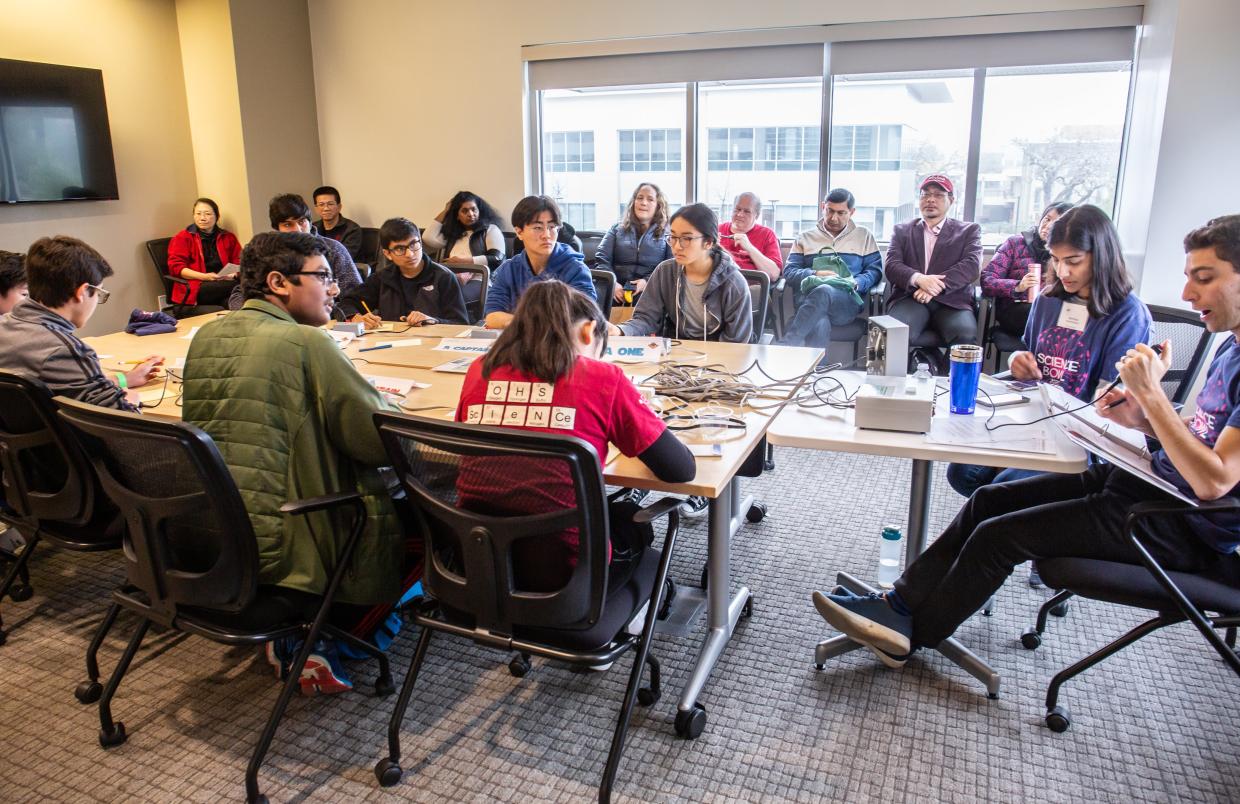
DOE provides 11 complete sets of practice questions from previous years that teams can use to prepare. Every year, the questions cover a wide range of detailed scientific information ranging from “Kirchhoff’s loop rule is a consequence of what conservation principle?” (answer: conservation of energy) to “From what group of organisms are restriction enzymes isolated?” (answer: bacteria).
SLAC offers tours of the facilities after lunch for students who are no longer competing. Each participant also receives a Science Bowl t-shirt designed for that year’s competition. Winners received their awards this year from Brian Sherin, SLAC’s deputy director for operations and chief operating officer.
Planning their strategy
To prepare for the competition, Harker’s two teams would face off against each other every Friday evening, using the questions provided by DOE along with some of their own. This practice made hitting the buzzer and coming up with the correct answer, both within seconds of hearing the question, feel more natural.
When the team runs up against a question they don’t know, they flag it to study later.
“I think the biggest strengths we had going into regionals was how well we work together as a team,” Liu says. “We each tend to go super in-depth when studying the subjects we love and that solid background helped us get a lot of the harder bonus questions.”
The U.S. Department of Energy’s Office of Science manages the National Science Bowl and sponsors the NSB finals competition.
For questions or comments, contact the SLAC Office of Communications at communications@slac.stanford.edu.
SLAC is a vibrant multiprogram laboratory that explores how the universe works at the biggest, smallest and fastest scales and invents powerful tools used by scientists around the globe. With research spanning particle physics, astrophysics and cosmology, materials, chemistry, bio- and energy sciences and scientific computing, we help solve real-world problems and advance the interests of the nation.
SLAC is operated by Stanford University for the U.S. Department of Energy’s Office of Science. The Office of Science is the single largest supporter of basic research in the physical sciences in the United States and is working to address some of the most pressing challenges of our time.




